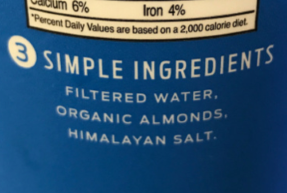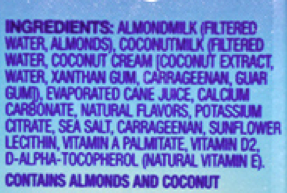
For those of us who are conscious about our health and the food we eat, it can be challenging to navigate through the sea of brands and products that all claim to be the best. Certain health conditions like IBD make the criteria for our food choices even more challenging, when we try to leave out foods and components that cause or promote disease.
There are many such foods, and they differ for different people. But for this week, we will talk a little about emulsifiers.
What are emulsifiers?
Emulsifiers, also known as emulsifying agents, are food additives added to allow different components of the final product to come together harmoniously. Emulsifiers help make ice cream smooth, and prevents it from melting quite so fast. Without emulsifiers–- you might see three distinct layers of your favorite salad dressing or mayonnaise instead of its smooth consistency! Another way to look at this is to think about oil and water, which will remain as two separate layers no matter how you try to physically mix them together.
Emulsifiers can be natural, or chemically synthesized and then added to a food product. Common emulsifiers used commercially include: lecithin (from eggs and soybeans), guar gum, xanthan gum, and carrageenan (from seaweed). Especially, scientists are looking at E466-carboxymethylcellulose (CMC, used in up to 2% of foods) and polysorbate-80 (P80, used in up to 1% of processed foods)1, which are shown to damage the intestinal lining and promote inflammation in animal studies. For example, a 2015 and 2017 follow-up studies have both shown that these added emulsifiers can mess with our microbiome if taken in large doses.
Some emulsifiers may cause harm not just for folks with IBD, but also rheumatoid arthritis, diabetes, and other chronic diseases. While the FDA has them classified under “generally safe”, doubts are mounting against some of them, while still others like lecithin and the gums MAY be actually be protective2,3.
Should I avoid them?
Because these emulsifiers are so ubiquitous in foods, it may be extremely difficult to avoid them completely. The whole story likely depends on specific emulsifiers, how much (dose) you are eating over time, and your particular genetics and sensitivities. More human studies are ongoing4, and we will know more over time. In the meantime, actively seeking out food products that are whole, without these additives as much as possible. Pay extra attention to the ingredient list of the product you are buying. If it is almond milk, the ingredient list should ideally look something like picture 1 and less like picture 2 where there is a long list of additives and even questionable ones like carrageenan. And be careful about maltodextrin…
|
Picture 1

|
Picture 2

|
These studies drive home the importance of cooking using fresh ingredients and avoiding or minimizing the use of processed foods. Check food ingredient labels and become more aware of what you are really eating.
References:
- Martino JV, Van Limbergen J, Cahill LE. The Role of Carrageenan and Carboxymethylcellulose in the Development of Intestinal Inflammation. Frontiers in Pediatrics. 2017;5:96. doi:10.3389/fped.2017.00096.
- Stremmel W, Staffer S, Stuhrmann N, et al. Phospholipase A2 of Microbiota as Pathogenetic Determinant to Induce Inflammatory States in Ulcerative Colitis: Therapeutic Implications of Phospholipase A2 Inflammatory Intestinal Diseases. 2018;2(3):180-187. doi:10.1159/000486858.
- Niv E, Halak A, Tiommny E, et al. Randomized clinical study: Partially hydrolyzed guar gum (PHGG) versus placebo in the treatment of patients with irritable bowel syndrome. Nutrition & Metabolism. 2016;13:10. doi:10.1186/s12986-016-0070-5.
- Chinonyelum Obih, GhassanWahbeh, DaleLee, Kim Braly Matthew Giefer, Michele Shaffer, Heather Nielson, David Suskind. Nutrition, Volume 32, Issue 4, April 2016, Pages 418-425


